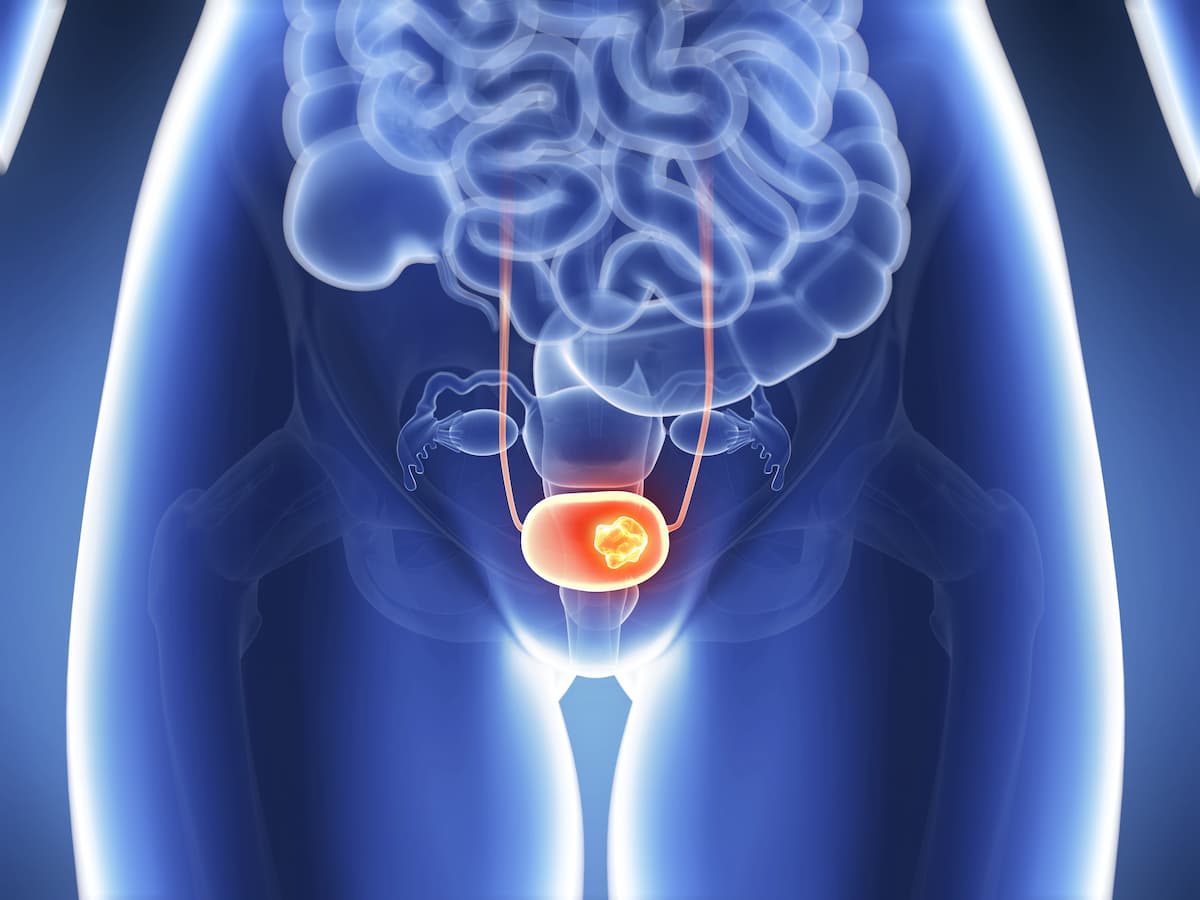Nadofaragene Firadenovec Results in uMRD-Negative Status in NMBIC
uMRD-negative status linked to recurrence-free outcomes with nadofaragene firadenovec in NMIBC
“uMRD profiling uses next-generation sequencing to identify mutations associated with urothelial carcinoma and can be used to predict recurrence and assess response to therapy,” Narayan and co-investigators wrote on their poster.

Nadofaragene firadenovec (Adstiladrin) resulted in no recurrences reported in patients with BCG-unresponsive non–muscle-invasive bladder cancer (NMBIC) who were urinary minimal residual disease (uMRD)-negativite after treatment, according to an analysis from a phase 2 trial presented in a poster at the 2024 ASCO Genitourinary Cancers Symposium.1
Beyond being highly predictive of future recurrence, uMRD was also shown to enable quantitative evaluation of molecular response to nadofaragene, according to first author Vikram M. Narayan, MD, and co-investigators. Narayan is an assistant professor in the department of Urology at Emory University School of Medicine.
“uMRD profiling uses next-generation sequencing to identify mutations associated with urothelial carcinoma and can be used to predict recurrence and assess response to therapy,” Narayan and co-investigators wrote on their poster.
Narayan et al’s uMRD analysis was from a multicenter, parallel-arm, open-label phase 2 trial (NCT01687244) that included 43 patients with BCG-unresponsive (relapsed/refractory) NMIBC treated with the novel intravesical therapy nadofaragene. To enroll in the trial patients had to have an ECOG performance status of ≤2. Patients with upper tract urothelial carcinoma were not eligible. The primary end point of the study was high-grade recurrence-free survival (RFS) at 1 year.2
The uMRD analysis included all patients in the trial who had been treated with at least 1 dose of nadofaragene (n = 35). Patients’ urine samples were collected before induction and at 3 months’ follow-up. Narayan et al conducted the uMRD testing using the UroAmp MRD assay, which“identifies single-nucleotide variants, copy-number variants (CNVs), insertion-deletions, copy-neutral loss of heterozygosity, microsatellite instability, and aneuploidy,” according to the researchers.1
Initial pathological stages for the 35 evaluable patients were Ta (n = 3), T1 (n = 9), and Tis (n = 23). Six patients also had concomitant carcinoma in situ (CIS). For the 32 patients with pre-treatment urine samples available, the most frequently mutated genes included TP53, TERT, PIK3CA, ARID1A, PLEKHS1, ELF3, and ERBB2. CNVs occurred most commonly in SOX4 and NIT1.In both pre- and post-induction collections, “uMRD identified patients with high (72%) and low (28%) recurrence risk,” the authors wrote.
The12-month pre-induction RFS rates were 71% and 20% for MRD-negatives and MRD-positives, respectively (P = .012).Also at 12 months, the post-induction RFS rates were 100% and 20% for MRD-negatives and MRD-positives, respectively (P= .035).
The investigators measured quantitative drug response using pre- and post-induction urine (n = 15) and categorized patients’ MRD status as negative (7%), complete responder (13%), partial responder (27%), stable (20%), or refractory (33%).The researchers then determined a broad correlation between recurrence and responses groups, with no recurrence in the MRD negative and complete responder groups and recurrence in 7 of the 12 patients that comprised the other groups.
“uMRD enables quantitative assessment of molecular response to drug treatment. uMRD-determined pre-treatment disease burden assessment can support stratification of control and intervention arms in future treatment trials,” Narayan et al wrote in their poster conclusion.
Earlier this month, Ferring Pharmaceuticals, the developer of nadofaragene, announced that the therapy is now fully available across the United States for the treatment of adult patients with high-risk BCG-unresponsive NMIBC with CIS with or without papillary tumors.3 In December 2022, the FDA approved nadofaragene firadenovec for use in this patient population.4
References
- Narayan VM, Tholomier C, Mokkapati S, et al. Urinary minimal residual disease detection predicts recurrence in BCG-unresponsive NIMBC and quantifies molecular response to nadofaragene firadenovec. J Clin Oncol 42, 2024 (suppl 4; abstr 635). doi: 10.1200/JCO.2024.42.4_suppl.63
- NIH US National Library of Medicine Clinical Trials.gov. Intravesical Administration of rAd-IFN/Syn3 in Patients With BCG-Refractory or Relapsed Bladder Cancer. Last updated July 24, 2017.Accessed January 25, 2024. https://classic.clinicaltrials.gov/ct2/show/NCT01687244
- Ferring announces full availability of ADSTILADRIN (nadofaragene firadenovec-vncg) in the U.S. News release. Ferring Pharmaceuticals. Published online and accessed January 25, 2024. https://www.businesswire.com/news/home/20240116546395/en/Ferring-Announces-Full-Availability-of-ADSTILADRIN%C2%AE-nadofaragene-firadenovec-vncg-in-the-U.S.
- FDA approves first gene therapy for the treatment of high-risk, non-muscle-invasive bladder cancer. News release. FDA. December 16, 2022. Accessed January 25, 2024. https://www.fda.gov/news-events/press-announcements/fda-approves-first-gene-therapy-treatment-high-risk-non-muscle-invasive-bladder-cancer